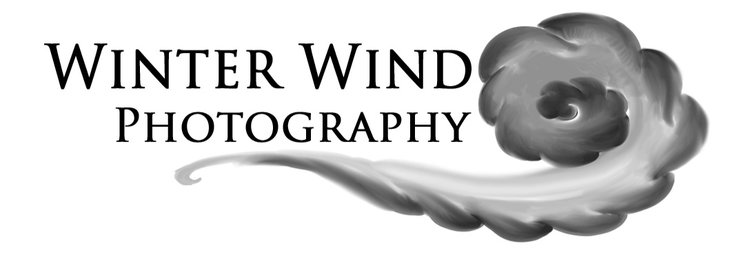Today’s Picture Tells A Story finds me back in frigid Maine, where the temperature as I’m writing this is -1F. It’s a far cry from Florida’s colorful warmth, or the unseasonably high of 55F that greeted me when I got off the plane in Portland last weekend.
There’s a stark beauty to winter in northern latitudes. Even traces of color, from evergreens, winter berries, and moss, become vibrant in their isolation. They stand out against the snow, where they’d be lost amidst the spring foliage and greenery. On a day of brutal cold such as this, the air is crystal clear, too cold to hold any moisture, and the icy blue of the sky seems to go on into infinity.
It is profoundly quiet as well. The fallen snow deadens sound, though not as dramatically as when it’s falling, and there are no leaves to rustle or sticks to snap as I make my way through the undergrowth to where this photo was taken. Moreover, with the air bitingly cold, and the wind chill well into dangerously low digits, I am alone in the park as far as I can tell.
Sony A7iii w/ Sigma 14-24mm f2.8 DG DN Art
ISO100, 1/200, f10, @14mm
Processed in Capture One Pro 20 & Adobe Photoshop 2020
There’s a deeply rewarding sense of satisfaction at taking on the power of winter and being comfortable doing so. I’ve planned extensively for this outing, wearing four layers of clothing, stout insulated boots, heavy mittens, and carrying two electric hand warmers. Even so, I have to pace myself carefully, almost meditatively, to avoid an asthma attack, which can be triggered by both cold and exertion in my case.
Amidst the peace and quiet of the snowy park, I’m also imminently aware of the fact that a moment’s carelessness could get me injured or killed in any number of ways.
A slip into the waterfall or river that brought me out here to Shaw Park/Gambo Preserve could send me into shock remarkably fast, not to mention wreaking havoc on the thousands of dollars worth of camera gear strapped about my person. An ankle caught in the hidden rocks and fallen trees beneath the snow could cause a break or sprain that would make getting back to the car next to impossible, an especially dire risk in an area with poor cell reception. Behaviors I’d think nothing of in warm weather, such as stepping into a rushing stream, or kneeling on wet ground to get a better angle for a photo, risks tipping the delicate balance of protective layers between me and the dangerous air.
Despite all of this, I know that my winter is a kitten compared to white tiger people in other areas experience. An excursion into a 12F day, even with high winds, may feel to someone on the North Dakota oil fields not unlike the weirdly balmy 55F weather that we had here last week.
The sense of pride and relief I feel returning from taking pictures is almost primal in nature. Not only did I go out into a world where the very air was ready to kill me, but thanks to good planning, I did so in relative comfort.
It’s at once a powerful and absurd little victory, to face the elements and come through intact, but today, I’ll take it.
